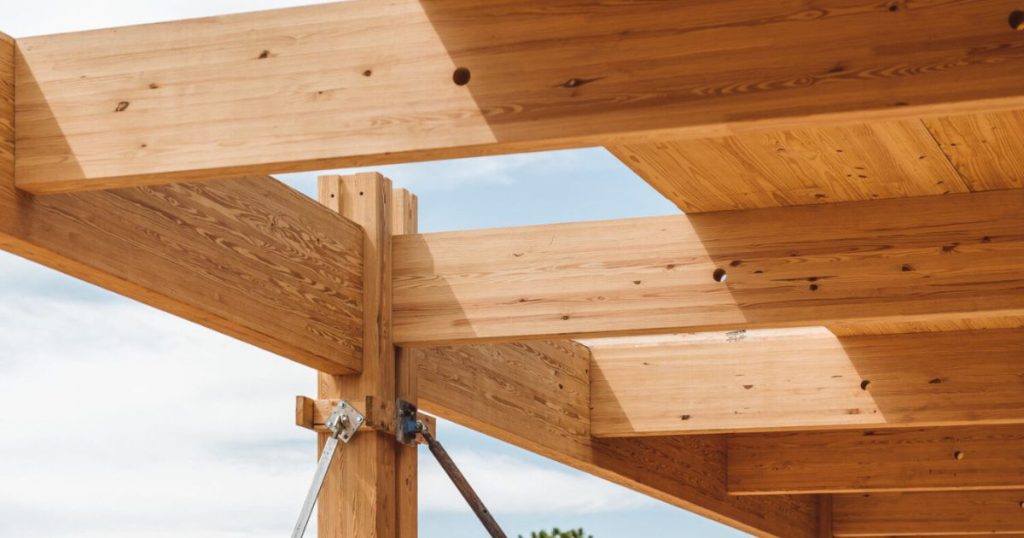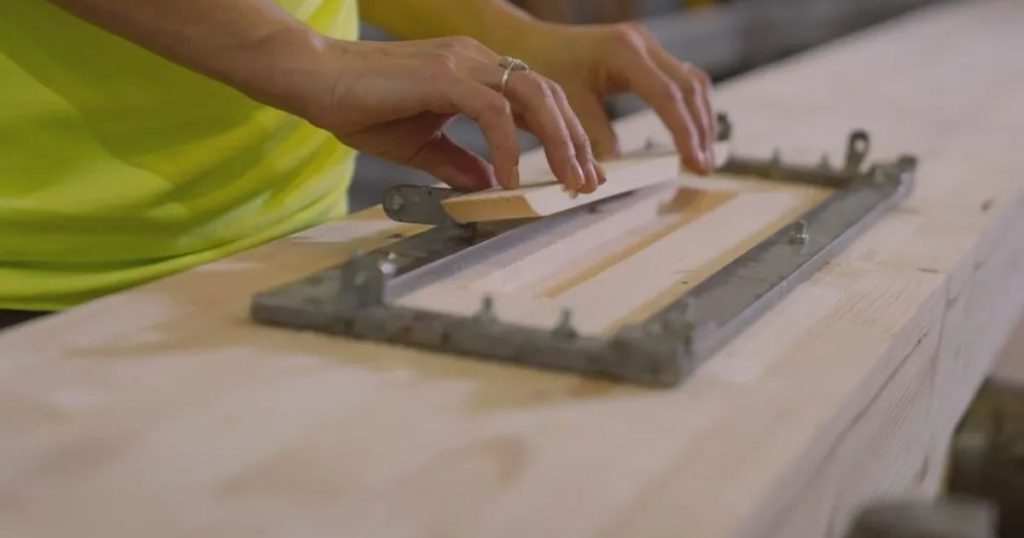Why Glulam Beams Are Revolutionizing Home Construction in 2025
Look, I get it. When you’re working on a DIY project, the idea of cutting a glulam beam yourself might seem like a straightforward way to save time and money. You might think, “How hard can it be? It’s just wood, right?” But here’s the thing—glulam beams aren’t your average timber. They’re engineered wood, carefully layered and glued to carry heavy loads and keep structures safe.
Cutting into them without the right knowledge or tools can seriously backfire. You risk weakening the beam, causing warping, or even worse—compromising the safety of your entire project. And trust me, once that happens, the costs and headaches multiply.
In this article, I’ll walk you through exactly why cutting glulam beams can be tricky, what common mistakes people make, and how you can avoid turning your DIY dream into a structural nightmare. Stick around—I promise it’s worth knowing before you grab that saw.
What Exactly Are Glulam Beams? Understanding Their Structure and Strength
Before we dive deeper, let’s clear up what makes glulam beams special. Unlike regular wood planks you might find at the hardware store, glulam (short for glued laminated timber) beams are made by bonding together several layers of wood with strong adhesives. This layering isn’t random — it’s engineered to handle heavy loads, resist bending, and provide consistent strength.
Think of it like plywood on steroids, designed for structural uses where strength and reliability matter. Because they’re manufactured under controlled conditions, glulam beams can span longer distances than regular wood without sagging.
So, when you cut into one without understanding how it’s built, you’re messing with a carefully balanced system. It’s not just about size — you could unintentionally weaken the beam or cause it to warp, which is why cutting glulam beams isn’t as simple as cutting a 2×4.
Understanding this foundation will help you see why I’m stressing caution as we move forward.
Why DIYers Want to Cut Glulam Beams: Common Motivations
I know why you might be tempted to cut glulam beams yourself. Sometimes, your project demands a custom fit—maybe that beam is just a little too long or doesn’t quite fit where you want it. Other times, budget pressures push you to try and save money by doing everything on your own instead of ordering pre-cut beams or hiring a pro.
There’s also this common belief that if you have the right tools, cutting a beam is no big deal. And honestly, for small wood pieces, that might be true. But with glulam beams, the stakes are higher because of their engineered design.
Understanding why you want to cut the beam helps me tailor this advice, so by the end of this article, you’ll know exactly when it’s worth the risk—and when it’s better to take a different route.
The Hidden Risks of Cutting Glulam Beams Yourself

Here’s the hard truth: cutting glulam beams without proper know-how can cause serious problems. When you slice into these engineered beams, you risk messing with their structural integrity.
Because glulams are made by gluing multiple layers, cutting can cause the layers to separate or weaken, which means the beam might not hold up like it’s supposed to.
Warping and splitting are common issues—once the beam’s protective layers are compromised, moisture can seep in, causing it to twist or crack over time. That’s a disaster waiting to happen, especially if the beam is supporting a load.
There’s also a safety factor. Using the wrong tools or techniques can lead to accidents during cutting. And don’t forget, if you cut into the beam, you might void the manufacturer’s warranty or even break local building codes without realizing it.
So, before you grab that saw, weigh these risks carefully. It’s not just about cutting wood; it’s about preserving the safety and strength of your project.
Have you ever worked with glulam beams? Share your experiences or questions in the comments—I’m here to help!
What Building Codes and Experts Say About Altering Glulam Beams
When it comes to glulam beams, building codes aren’t just red tape—they’re there to protect you and your structure. Most codes have strict guidelines about modifying structural components like glulam beams, including whether and how you can cut or alter them.
Many experts and engineers recommend against cutting these beams yourself unless it’s done under professional supervision. That’s because even small modifications can lead to failures that aren’t obvious at first but show up later, putting your safety at risk.
In fact, some building codes require engineering approval before any cutting or drilling is done on glulam beams. Ignoring these rules could lead to failed inspections or costly repairs down the line.
So, always check local codes and consider consulting a structural engineer before making any changes. It might seem like an extra hassle, but it’s well worth the peace of mind.
Real DIY Experiences and Expert Opinions
One of the best ways to understand the risks of cutting glulam beams is by hearing from people who’ve tried it. On forums like Fine Homebuilding and Reddit, DIYers openly share their mistakes—like beams splitting after cutting or discovering hidden damage that wasn’t obvious at first. These stories aren’t just warnings; they’re real lessons from folks just like you.
Experts, including structural engineers and seasoned carpenters, often caution against DIY cutting unless you really know what you’re doing. In fact, I came across tweets from professionals who emphasize that even small errors in cutting can compromise the beam’s strength and cause expensive fixes later.
This mix of real-life experiences and expert advice helps you see both sides—what happens when cutting goes wrong, and why professional guidance matters.
Practical Alternatives to Cutting Glulam Beams at Home
If cutting your glulam beam feels risky (and trust me, it often is), don’t worry—there are smarter alternatives. First, many suppliers offer pre-cut or custom-cut beams to your exact measurements, saving you the hassle and risk of cutting yourself.
You can also explore modular or adjustable components that fit your project without modifying a full beam. These options often come with manufacturer guarantees, giving you extra peace of mind.
And if your project really demands cutting, consider hiring a professional carpenter or structural engineer. Their expertise can prevent costly mistakes and ensure your beam stays safe and strong.
If You Must Cut: How to Do It Safely and Effectively

Look, sometimes you just don’t have a choice—you need that glulam beam cut to fit your project. If that’s the case, you’ve got to do it right. First, make sure you have the proper tools: a high-quality circular saw or a track saw with a fine-toothed blade designed for engineered wood is a must.
Set up a stable, flat workspace to avoid any wobbling or movement while cutting. Measure twice, cut once—that’s not just a cliché here; precision matters more than ever.
Cut slowly and steadily to minimize splintering or delamination. After cutting, inspect the beam for any cracks or layer separations. If you notice damage, reinforce the cut area with appropriate structural supports or consult a professional immediately.
Remember, safety gear like gloves, eye protection, and ear plugs isn’t optional here—it’s mandatory. Doing this carefully can reduce risks but won’t eliminate them completely.
Thinking about tackling a glulam beam project? Drop your doubts below so we can talk through them together.
Key Takeaways for DIY Enthusiasts
Let me wrap this up with the essentials you should remember:
- Glulam beams are engineered for strength—cutting them yourself carries serious risks.
- Always consider buying pre-cut beams or hiring a pro first.
- If you must cut, use the right tools, measure precisely, and work slowly.
- Follow local building codes and, whenever possible, get a structural engineer’s input.
- Real DIY experiences show cutting mistakes can be costly and dangerous.
Keeping these points in mind can save you time, money, and a lot of stress. So, before you start cutting, ask yourself—is it really worth it?
Conclusion
Cutting glulam beams might seem like a quick fix, but it comes with risks that can affect your project’s safety and durability. Knowing when to DIY and when to seek professional help can save you from costly mistakes.
Always weigh your options carefully, follow proper guidelines, and don’t hesitate to ask experts when in doubt. Your project—and your peace of mind—will thank you for it.
If you found this article useful, make sure to follow for more hands-on tips and expert DIY advice. Let’s build smart, safe, and strong—together.
Disclaimer: This article is for informational purposes only and does not replace professional advice. Always consult qualified experts and local building codes before making structural changes. Your safety is the top priority.


